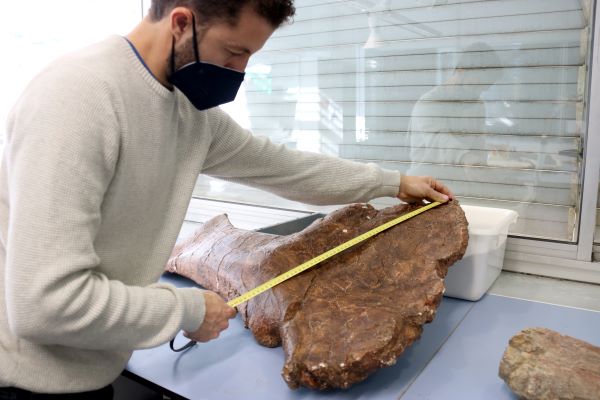New dinosaur species discovered in Catalan Pyrenees
70.5 million-year-old Abditosaurus kuehnei is most complete titanosaur fossil in Europe

A new dinosaur species, the Abditosaurus kuehnei, has been discovered in Pallars Jussà county town of Orcau in the Catalan Pyrenees.
These findings were recently published in peer-reviewed scientific journal Nature Ecology and Evolution.
Thought to have been the largest dinosaur in the Iberian Peninsula and southern France, the 70.5 million-year-old Abditosaurus kuehnei fossil unearthed by researchers from the Miquel Crusafont Catalan Institute of Paleontology (ICP), the Conca Dellà Museum, as well as the Autonomous University of Barcelona and the universities of Lisbon and Zaragoza, is the most complete semi-articulated titanosaur specimen that has been found in Europe to date.
Abditosaurus kuehnei are estimated to have been 18-meter long herbivores that weighed 14 tons, something that came to a surprise to researchers. "Late Cretacious period titanosaurs in Europe tended to be small or medium-sized," said the ICP's Bernat Vila.
The path to the Abditosaurus kuehnei's discovery, however, traces its origins back nearly seven decades to German paleontologist Walter Kühne, after whom the species is named.
Kühne first found fossil bits in the area in 1954, but was unable to carry out further research. "He knew there was an entire dinosaur fossil there, but back then he didn't have enough funding nor was there sufficient interest in the project to the dig going," Vila told the Catalan News Agency.
Thirty-two years later, in 1986, an ICP team picked up where Kühne had left off and found more fossil parts, suggesting that the German researcher had indeed been on the right track. But it was not until 2012 that the dig began to pick up speed again.
"We found remains, including an articulated neck, and by then we already had the means to extract them, whereas 60 years ago this was not possible," Vila said.
The history of the discovery of this dinosaur species is the subject of a TV3 documentary called 'L'últim gegant d'Europa' (Europe's last giant).